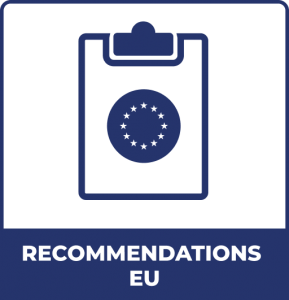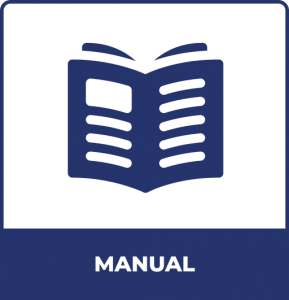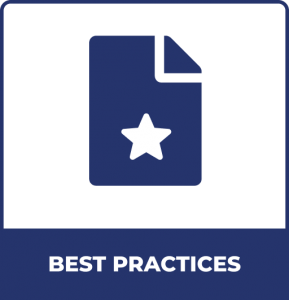A comprehensive training Manual for PO. From the first chapter, Introduction to Corrections, to the last chapter, Responding to Incidents and Emergencies, instruction on how to communicate, interact with and respond to inmates, staff, and visitors is included. Effective communication is key to understanding others.
The Chapter 7 describes the wide range of populations and groups a Florida officer may encounter and teaches appropriate communication responses.
This training program provides a clear picture of the job requirements and work environment. It encourages the training academy to coordinate a field trip so PO may observe a correctional facility, preferably early on studies.
Chapter 1 Introduction to Corrections
UNIT 1: INTRODUCTION
- Lesson 1: Correctional Officer Training Program Overview.
- Lesson 2: Criminal Justice Values and Ethics
- Lesson 3: Professionalism and Chain of Command
UNIT 2: LEGAL
- Lesson 1: Criminal Justice System and Components
- Lesson 2: Constitutional Rights
- Lesson 3: Inmate Rights
- Lesson 4: Legal Issues with Contraband
- Lesson 5: Criminal Acts
- Lesson 6: Use of Force
- Lesson 7: Criminal and Civil Liability
Chapter 2 Communications
UNIT 1: INTERPERSONAL COMMUNICATION
- Lesson 1: Interpersonal Communication
UNIT 2: TELECOMMUNICATIONS
- Lesson 1: Procedures and Equipment
UNIT 3: INTERVIEWING
- Lesson 1: Preparing for and Conducting an Interview
UNIT 4: REPORT WRITING
- Lesson 1: Note-taking and Reports
- Lesson 2: Organizing Facts
- Lesson 3: Elements of Effective Report Writing
- Lesson 4: Writing and Evaluating the Report
Chapter 3 Officer Safety
- LESSON 1: SAFETY AND SECURITY
- LESSON 2: IDENTIFICATION
- LESSON 3: MANIPULATION AND DECEPTION
- LESSON 4: CONTRABAND
- LESSON 5: SEARCHES
- Chapter 4 Facility and Equipment
UNIT 1: EQUIPMENT MANAGEMENT
- Lesson 1: Issuing, Receiving, and Documenting Equipment
- Lesson 2: Weapons in a Correctional Facility
UNIT 2: HAZARDOUS MATERIALS AND SENSITIVE SUPPLIES
- Lesson 1: Hazardous Materials and Sensitive Supplies
UNIT 3: ENTERING, EXITING AND MOVING WITHIN FACILITIES
- Lesson 1: Security Equipment and Moving Within Secured Areas
UNIT 4: INSPECTIONS
- Lesson 1: Inspection Criteria and Methods
UNIT 5: SECURITY
- Lesson 1: Security Standards and Inspections
- Lesson 2: Perimeter Security
UNIT 6: FACILITY SAFETY CONCERNS
- Lesson 1: Identifying and Resolving Safety Concerns
UNIT 7: SANITATION AND HEALTH
- Lesson 1: Sanitation Standards and Environmental Health
Chapter 5 Intake and Release
- LESSON 1: INTAKE AND ASSESSMENT
- LESSON 2: SEARCHING AND INVENTORYING
- LESSON 3: FINGERPRINTING AND PHOTOGRAPHING
- LESSON 4: CLASSIFICATION AND HOUSING
- LESSON 5: RELEASE
Chapter 6 Supervision of Inmates
- LESSON 1: OBSERVATION AND MONITORING OF INMATES
- LESSON 2: SUPERVISION OF THE REFERRAL PROCESS
- LESSON 3: INMATE DISCIPLINE PROCESS
- LESSON 4: INMATE COUNT
- LESSON 5: INMATE DINING
- LESSON 6: PROCESSING MAIL
- LESSON 7: VISITATION
- LESSON 8: ESCORTING INMATES
- LESSON 9: TRANSPORTING INMATES
- LESSON 10: WORK SQUADS
- LESSON 11: HOSPITAL ASSIGNMENTS
Chapter 7 Supervising Special Populations
UNIT 1: DIVERSITY IN THE CORRECTIONAL SETTING
- Lesson 1: Inmate Societies
UNIT 2: SECURITY THREAT GROUPS
- Lesson 1: Gang and STG Characteristics
Lesson 2: STG Structures and Activities
UNIT 3: RECOGNIZING SUBSTANCE ABUSE AMONG INMATES
- Lesson 1: Inmates with a History of Substance Abuse
UNIT 4: MENTALLY ILL INMATES AND INMATES WITH MENTAL RETARDATION
- Lesson 1: Inmates with Mental Illness
Lesson 2: Inmates with Mental Retardation
UNIT 5: JUVENILE INMATES AND YOUTHFUL OFFENDERS
- Lesson 1: Monitoring Juvenile Inmates and Youthful Offenders
UNIT 6: ELDERLY INMATES
- Lesson 1: Monitoring Elderly Inmates
UNIT 7: FEMALE INMATES
- Lesson 1: Female Inmates
UNIT 8: INMATES WITH SEXUAL ABUSE AND SEXUALITY ISSUES
- Lesson 1: Sexually Abused Inmates
- Lesson 2: Inmates with Sexuality Issues
UNIT 9: PHYSICALLY DISABLED INMATES
- Lesson 1: Monitoring Physically Disabled Inmates
UNIT 10: INMATES WITH MEDICAL NEEDS
- Lesson 1: Characteristics of Inmates with Medical Needs
UNIT 11: INMATES IN CONFINEMENT
- Lesson 1: Confinement
UNIT 12: DEATH ROW INMATES
- Lesson 1: Monitoring Death Row Inmates
Chapter 8 Responding to Incidents and Emergencies
UNIT 1: IDENTIFYING EMERGENCY SITUATIONS
- Lesson 1: Responding to an Emergency Situation
Lesson 2: Emergency Plans
UNIT 2: DETERMINING THE LEVEL OF RESPONSE ASSISTANCE
- Lesson 1: Determining Level of Response Assistance
UNIT 3: TYPES OF EMERGENCIES
- Lesson 1: Inmate Escapes
- Lesson 2: Medical Emergencies
- Lesson 3: Riots
- Lesson 4: Hostage Incidents
- Lesson 5: Outside Threats to a Facility
- Lesson 6: Fires
- Lesson 7: Hazardous Materials
- Lesson 8: Bomb Threats
- Lesson 9: Man-Made or Natural Disasters
UNIT 4: INVESTIGATING CRIMES
- Lesson 1: Crime Scene Control.
- Lesson 2: Managing Victims, Witnesses and Suspects
- Lesson 3: Investigations and Reporting
- Lesson 4: Chain of Custody for Evidence
Glossary
Florida Department of Law Enforcement (FDLE)
FDLE (2013). Florida Basic Recruit Training Program: Corrections Volume 1. Florida Department of Law Enforcement. Layout 2 (prisonlegalnews.org)



